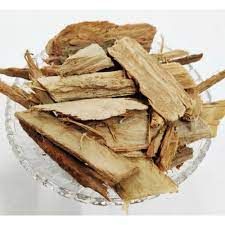
Dried Tarragon Leafs
Get Price Quote
10 Ton (MOQ)

Ashok Chaal Bark
50 - 70 Per Kilogram
40 Kilogram (MOQ)
Best Deals from Dry Herbs

Angelica Root
Get Price Quote
Other Common Names: European angelica, wild parsnip, garden angelica, holy ghost, masterwort, wild celery, fjällkvanne (Swedish), chien-tu (Chinese), angélique (French), Engelwurz (German).Habitat: Angelica grows wild in Scandinavia, Greenland, Iceland, central Europe and some parts in North Asia. It will only grow in damp soil.Plant Description: Angelica is a biennial or short lived perennial plant that belongs to the Apiaceae family, better know as celery, carrot or parsley family.It can grow up to six feet tall or around 180 cm. The root is thick, fleshy and branched with several small rootlets. The leaves are green, consisting of three parts. Each part produces three serrated and lobed leaflets.Therapeutic Benefits, Application and Claims of Angelica A volatile oil is found in all parts of the plant. The root contains phellandrene, terpenes, coumarin and coumarin derivatives (a total of 26 derivatives have been identified) such as osthol, angelicin and archangelicin. The root also contains bitter substances, glucose, sucrose, saccharine and some organic acids like aconitic acid, fumaric acid and oxalic acid. The seeds are rich in fatty oils and the leaves contain tannin and bitter substances. Angelica has for centuries been an important medicinal plant and food source, especially to the Sami or Lapps in northern Finland, Norway and Sweden and the Inuits in Greenland. The plant was well know among the vikings and according to the Icelandic sagas the plant was protected by law from over harvesting until the year 1000’s. In Norway the plant was cultivated in special gardens and it was probably the first medicinal plant that was exported from the Nordic countries to the rest of Europe. In the 14th century angelica had become well know as a medicinal herb throughout Europe. During the middle ages the root of the plant was believed to be effective as a treatment for the plague and in the 17th and 18th century the herb was widely used against intestinal infections such as dysentery and cholera. Among modern day herbalists angelica is considered a bitter, warming and invigorating herb that can be used as a remedy for wide variety of diseases and disorders. Because the herb is a bitter, it is primarily used for ailments associated with the digestive system. The stems of angelica are edible. They are very rich in nutrients and can be eaten in the same manner as celery. The outer layer of the stems is usually removed and only the green and juicy inner part is eaten. They have a strong taste, but if cooked the flavor becomes milder. The plant has been used as a flavor agent in liqueurs for centuries and is still the main flavor ingredient in the French liqueurs Bénédictine and Chartreuse.

dehydrated herbs
Get Price Quote
1 Ton (MOQ)

Oregano Dried
Get Price Quote

dehydrated herbs
Get Price Quote
dehydrated herbs, Wheatgrass Powder, Dehydrated Carrot Flakes

Dry Herbs
Get Price Quote
Dry Herbs, Oyester Mushrooms (fresh and dry), organics products

Dry Herbs
Get Price Quote
Dry Herbs, Tej-Patta Plant, Black Seed Oil, bhringraj oil, Babchi Oil

Dry Herbs
Get Price Quote
Dry Herbs, Ayurveda Products, Indian Herbs, Raw Herbs, Ayurveda Products

Dried Herbs
Get Price Quote
Dried Herbs, Olive Oil

cold dried herbs
Get Price Quote
cold dried herbs, cold dried fruits, dried seasoning, Vegetables Powder

Dry Herbs
Get Price Quote
Dry Herbs, sandalwood agarbatti, White Charcoal Pencils